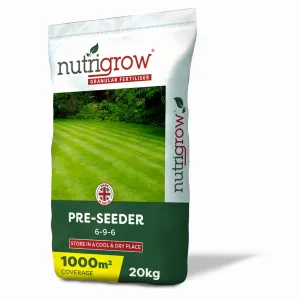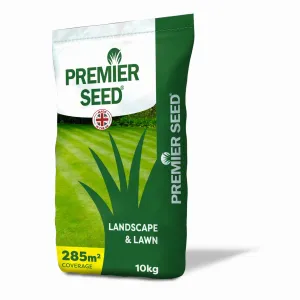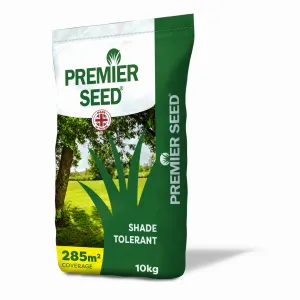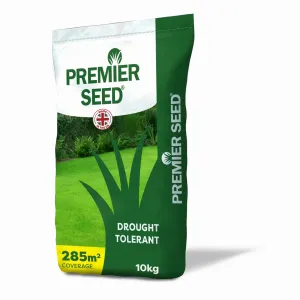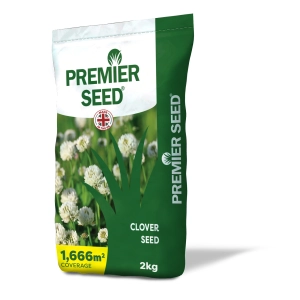Why do we usually avoid sowing grass seed in summer? It’s primarily because the ground is usually too hard and dry in the summer months for effective seed germination.
We’ve also historically been at the behest of hosepipe bans in the warmest summer months, and given that grass seed needs moisture to germinate, it’s easy to see why summer is traditionally avoided as a time to sow.
However, our climate is changing and what was once an unmovable date in the gardening calendar is no more.
The wet weather that most of the country has experienced in the last two months (at the time of writing), means that the ground is likely to be in perfect condition for sowing for a few weeks yet. This year at least, our sowing season has been greatly extended.
So, if you’re among those who thought you’d missed out in spring, don’t worry – you still have plenty of time to create a perfect lawn and enjoy it this summer.
Preparation First
Before you start to seed your lawn in summer, bear in mind that it may need a spot of fertiliser – especially given that the prolonged wet weather may have caused nutrient leeching.
Despite its name, pre-seed fertiliser can be used after seeding as well as before. It will deliver the right nutrients to support healthy seed germination and growth with a six-week slow-release formulation.
Use a spreader to enable effective fertiliser dispersal across your lawn. Our Professional Fertiliser Spreader is a high quality rustproof spreader that will broadcast fertiliser evenly across your lawn but can also be used to sow your seed too.
You’ll find fertilising and sowing much easier and more effective when you use a spreader – saving you the task of carrying sacks around and improving the chances of even grass growth.
Seeding Supremacy
When it comes to choosing the correct grass seed, the magic is in the mix. Read on to select the one that’s right for you - whether you’re starting your lawn from scratch, over-seeding, or resolving bare and thin patches of grass.
For most uses, in most lawn types, our exclusive Premier Landscape and Lawn Grass Seed is ideal. It is formulated for use in new lawns and for patch treatment.
Premier Landscape and Lawn seed contains 80% Perennial Ryegrass for fast establishment and 20% Strong Creeping Red Fescue for resilience.
For a denser matt of grass or for formal ornamental or landscape use, choose our Premier Formal Grass Seed. This seed mix contains 50% Strong Creeping Red Fescue, 25% Chewings Fescue for drought and frost resistance, 20% Mirador Spender Creeping Red Fescue for a finer quality lawn finish, and 5% Browntop Bentgrass for close mowing.
Bear in mind that formal grass seed blends will thrive better in areas where there is a lower footfall from children and pets.
Shade and Drought Tolerant Grass Seed
Grass that doesn’t see much sun or is sheltered from rain can still thrive if you select the right mix.
For shady areas, patches under trees, or grass growing next to north and east facing walls, select our Premier Shade Tolerant Grass Seed
This shade tolerant seed mix contains a complex blend of five different types of seed including Maxima Strong Creeping Fescue, Highnote Chewings Fescue, Samanta Slender Creeping Red Fescue, Tetris Smooth Stalked Meadow Grass, and Highland Browntop Bentgrass.
Each of these varieties is specially selected for their ability to grow well in shaded areas and withstand the pressures of poorer weather.
In the same way, our Premier Drought Tolerant Grass Seed has a specially selected high performing mix of seed types, but this blend is designed to help grass tolerate extended periods of dry weather.
Hints, Tips and Techniques
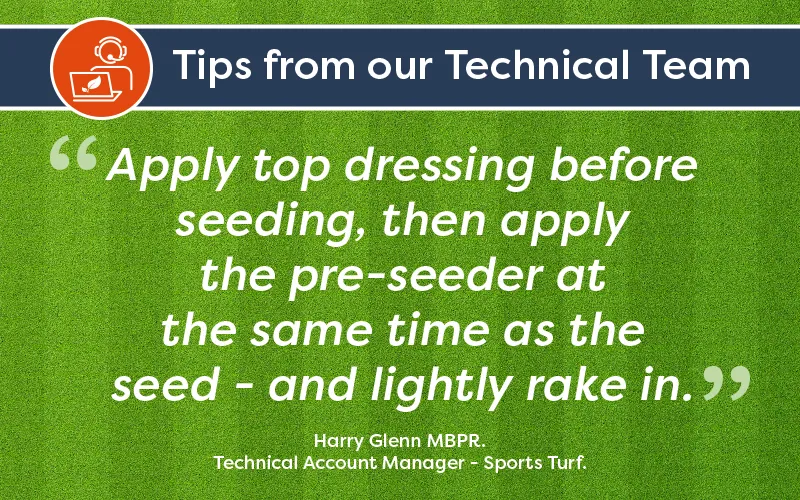
Buy your chosen seed, fertiliser and spreader by selecting the products on this page or by visiting our special offers page. You can buy top dressing here.
Find out more about how long grass seed takes to germinate (and how you can speed things up) in our guide here.
Whichever seed you choose, the process of sowing is the same. Read up on the techniques of sowing a lawn here.




